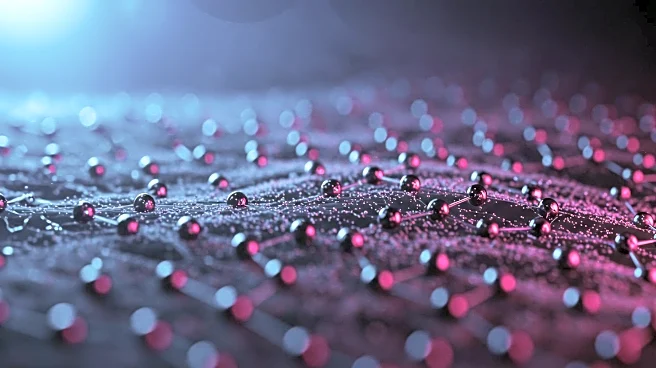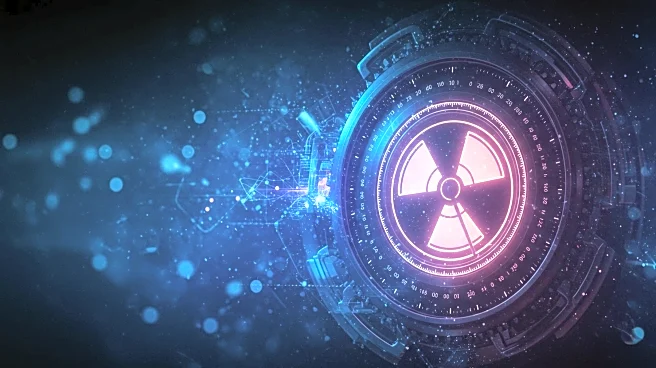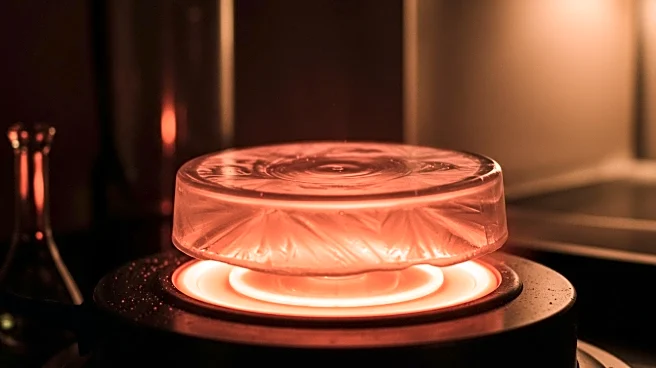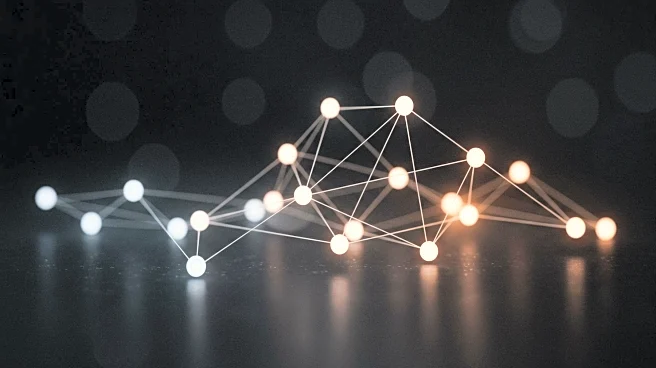What is the story about?
What's Happening?
Scientists at the Weizmann Institute of Science have discovered a new atomic vibration in graphene known as 'phasons,' which could provide insights into longstanding physics mysteries. Using a cryogenic microscope, researchers observed electrons causing graphene atoms to vibrate, revealing phasons that are linked to zero-resistance current and strange metal signals. This discovery is significant because twisted bilayer graphene is known for superconductivity and strange metal behavior, which are typically found in different materials. The phason, a collective ripple, shifts the Moiré lattice and strengthens its grip on electrons at longer wavelengths, contrary to conventional acoustic modes. This behavior allows phasons to scatter slow carriers even at low energy levels, potentially influencing resistivity and electron pairing.
Why It's Important?
The discovery of phasons in graphene could have profound implications for quantum materials and superconductivity research. Phasons defy classical theories by strengthening electron coupling at low energies, which may contribute to superconductivity at temperatures just above absolute zero. This could lead to new multi-channel pairing mechanisms, challenging traditional Bardeen-Cooper-Schrieffer (BCS) theory. Understanding electron-vibration coupling is crucial for predicting the stability of future quantum devices, potentially impacting processor speeds and sensor resolutions. The ability to adjust layer twist offers a mechanical method to control interaction strength, which could replace chemical doping in quantum circuits.
What's Next?
Future research will focus on whether phasons alone can explain superconductivity or if they assist higher-energy phonons. Measurements below the first magic angle may help resolve this debate by tracking the onset of electron pairing as coupling increases. Additionally, researchers aim to model how lattice relaxation and disorder affect phason behavior at low energies. The cryogenic microscope's high energy resolution will be instrumental in capturing any broadening of the phason mode and quantifying its impact. This study opens avenues for testing phasons and other excitations in various van der Waals materials, potentially leading to advancements in quantum device engineering.
Beyond the Headlines
The discovery of phasons in graphene not only advances fundamental physics but also highlights the potential for innovative quantum device design. By providing a mechanical dial for interaction strength, phasons could inspire tunable quantum circuits, offering new possibilities for electronic and sensor technologies. The research underscores the importance of momentum-resolved spectroscopy in exploring collective excitations across different materials, paving the way for future breakthroughs in quantum materials science.
AI Generated Content
Do you find this article useful?











